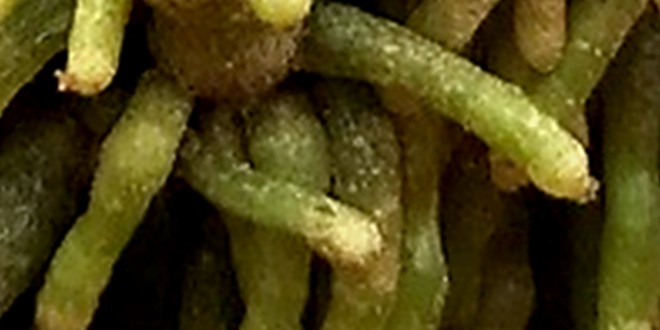Do human beings have legs growing from their shoulders? No, but some plants such as ivy and the “wandering Jew” (spiderwort) plant survive and flourish with their roots above ground. To Find the roots, you have to look up.
Plants continuously form new organs in different developmental contexts in response to environmental cues. Roots are normally associated with things that live underground, in the damp and the dark. For example, turnips, radishes and yams are below the ground. However, many plants establish their roots above ground. For example, the thriving ivy plant uses its roots to attach to buildings, and the mighty ficus tree uses them to support their large branches. What makes plants form roots above ground?
In a study just published in the prestigious journal Science under the title “A conserved superlocus regulates above- and belowground root initiation,” Hebrew University of Jerusalem (HUJI) Prof. Idan Efroni and his team found the hidden mechanism that makes it possible for plants to grow aerial roots. By decomposing the stem to individual cells, the team identified the extremely rare cells that, when conditions are ripe, cause roots to grow in the air.
“Superficially, these look like other plant cells – which is why they evaded detection for so long,” Efroni said. “We used new techniques to closely screen thousands of cells, one by one. We knew that by finding the cells that can make roots, we would be able to look for the ‘switch’ that turns them on.”
Plants make roots from small organs called meristems. By closely examining these unique cells, Dr. Naama Gil-Yarom, a research associate at the HUJI lab, was able to catch them in the act of making a meristem and to identify the genes that are active right at the transition point. One gene in particular stood out, and when HUJI doctoral student Moutasem Omary used the CRISPR gene-editing technique to delete this gene, the plants lost their ability to make aerial roots. They mapped tomato (Solanum lycopersicum) shoot-borne root development at single-cell resolution.
When Efroni and his team studied the genome, they were in for a surprise. Right next to the gene that controlled aerial roots production was a very similar gene. “We recognized it immediately from previous studies as the gene that controls the formation of underground roots,” recalled Efroni, “I remember thinking that we have just stumbled upon the central hub that controls root formation.” Indeed, when the researchers disabled all of these genes, the plants could not grow any roots at all.
By tracing the evolution of these genes, the team found that many major crops, such as sweet potatoes, beans, tomato, rice, maize and wheat share this dual root-control-system. “The ability to make aerial roots is highly advantageous to the plant,” continued Efroni. “In the event that the underground roots are flooded or damaged, the plant can grow aerial roots and survive the assault,” he added. “Plants evolved this ability early on and never forgot how to do it.”
Nevertheless, what is helpful in nature may actually come as a disadvantage in agriculture. Many plants are grafted, meaning they have the root system of one plant and the above-ground system of another. This makes it possible for farmers to grow plants that are resistant to soil disease, but if the top part of the graft grows an aerial root, it will bypass the soil-resistance and make all the effort of grafting useless.
Thanks to Efroni and his team’s discovery, we know which genes to target and can create plants with no aerial roots, making the practice of grafting that much more effective. Looking ahead, the team plans to modify the DNA code at the root control cluster to make customized above- and below- ground root systems. “Here in Israel, to make the most use of the land we’ve got, we need to optimize the way our food crops grow and utilize resources,” Efroni concluded, “Doing that is a daunting and complex task, but, step by step, we’re getting there.”
The shortcode is missing a valid Donation Form ID attribute.




